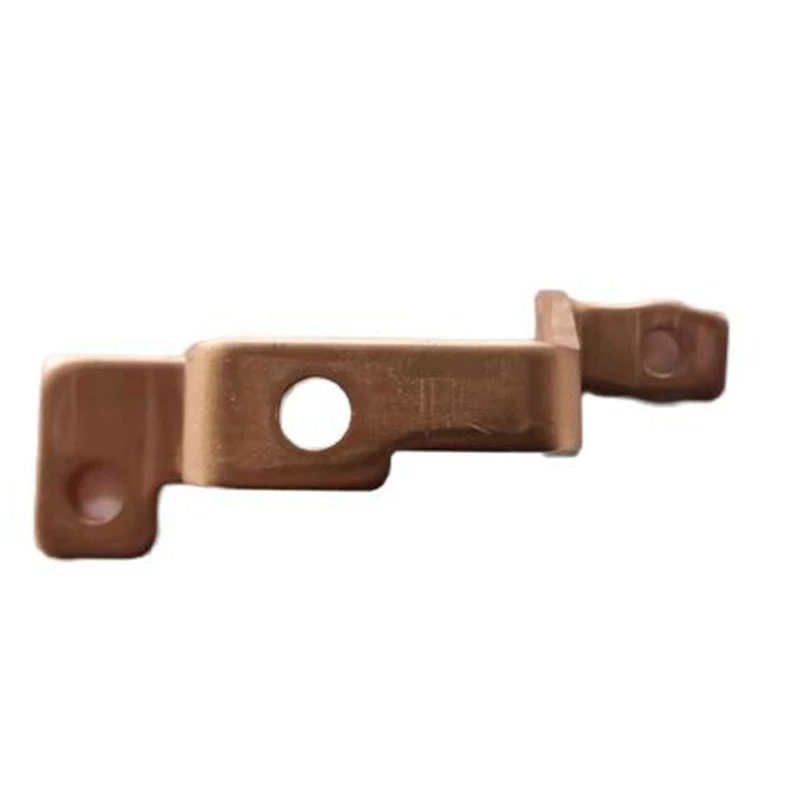Innovative Techniques in Cold Chamber Die Casting for Superior Metal Forming Efficiency
Understanding Cold Chamber Die Casting A Comprehensive Overview
Cold chamber die casting is a specialized manufacturing process predominantly used to produce high-quality metal parts and components with intricate geometries and outstanding surface finishes. This technique is widely utilized in industries such as automotive, aerospace, and electronics, where component precision and durability are paramount. This article delves into the principles, advantages, limitations, and applications of cold chamber die casting, highlighting its significance in modern manufacturing.
What is Cold Chamber Die Casting?
Cold chamber die casting is a method in which molten metal is injected into a mold to form specific shapes and designs. Unlike hot chamber die casting, which uses a gooseneck to deliver molten metal directly from the melting pot to the die, cold chamber die casting involves a separate melting furnace. The molten metal is ladled manually or mechanically into a cold chamber (the injection chamber), and then high pressure is applied to inject the metal into the die.
The process typically involves several steps
1. Melting the Metal The metal alloy, commonly aluminum, magnesium, or copper, is melted in a furnace. 2. Inserting the Metal into the Chamber Once sufficiently molten, the liquid metal is poured into the cold chamber. 3. Injecting the Metal A piston or ram applies pressure to force the metal into the mold cavity. This injection must occur rapidly to prevent the metal from solidifying prematurely. 4. Cooling and Solidifying After the metal fills the die, it is allowed to cool and solidify before the die is opened, and the finished part is ejected.
Advantages of Cold Chamber Die Casting
Cold chamber die casting offers multiple advantages that make it an attractive option for manufacturers
1. High Quality and Precision The process produces components with excellent dimensional accuracy and surface finishes, making it suitable for intricate designs. 2. Material Versatility Cold chamber die casting can accommodate various metal alloys, especially those with high melting points that cannot be processed using the hot chamber method. 3. Tight Tolerances The high injection pressures used in cold chamber die casting enable the creation of parts with tight tolerances, essential for many applications. 4. Good Mechanical Properties The cooling process results in fine-grained structures that enhance the mechanical strength and durability of the cast parts.
cold chamber die casting

Limitations of Cold Chamber Die Casting
Despite its advantages, cold chamber die casting also has some limitations
1. Higher Costs The equipment and operational costs are generally higher than those for hot chamber processes. Moreover, the initial setup for creating molds can be expensive. 2. Efficiency The manual or mechanical ladling of metal into the chamber can slow the process down compared to the continuous operation of hot chamber systems. 3. Limited to Non-Ferrous Metals Cold chamber die casting is predominantly used for non-ferrous alloys. It is not suitable for ferrous metals due to their high melting temperatures.
Applications of Cold Chamber Die Casting
The applications of cold chamber die casting are widespread and critical in numerous sectors
- Automotive Industry Components such as engine blocks, transmission cases, and structural parts are frequently manufactured using this process due to requirements for high strength and lightweight characteristics. - Aerospace The need for lightweight and strong parts makes cold chamber die casting ideal for aerospace applications, including cabin structures, fastening components, and engine casings. - Consumer Electronics The precise and complex parts produced through this method are often used in electronic devices, enhancing their functionality and aesthetic appeal.
Conclusion
Cold chamber die casting is a vital manufacturing process that provides many industries with the ability to produce complex, high-quality components. While it does come with some challenges, the benefits, including precision, material versatility, and mechanical properties, make it indispensable in sectors where performance is critical. As technology continues to evolve, we can expect to see further advancements in cold chamber die casting processes, driving innovation and efficiency in manufacturing.
-
Premium OEM Auto Parts & Stamping - Reliable ManufacturersNewsAug.15,2025
-
Crawler Drilling Rig for Confined Spaces-Baoding Hairun MachineryNewsAug.15,2025
-
Drill For Confined Spaces - Baoding Hairun Machinery And Equipment Trading Co., Ltd.NewsAug.15,2025
-
Advanced Crawler Drilling Rig - Baoding Hairun Machinery | Underground Mining SolutionsNewsAug.14,2025
-
OEM Sand Cast Pump Valve Fittings - Baoding Hairun Machinery And Equipment Trading Co., Ltd.NewsAug.14,2025
-
OEM Sand Cast Pump Valve Fittings - Baoding Hairun | Customizable Fluid Control & Industrial Casting SolutionsNewsAug.14,2025















